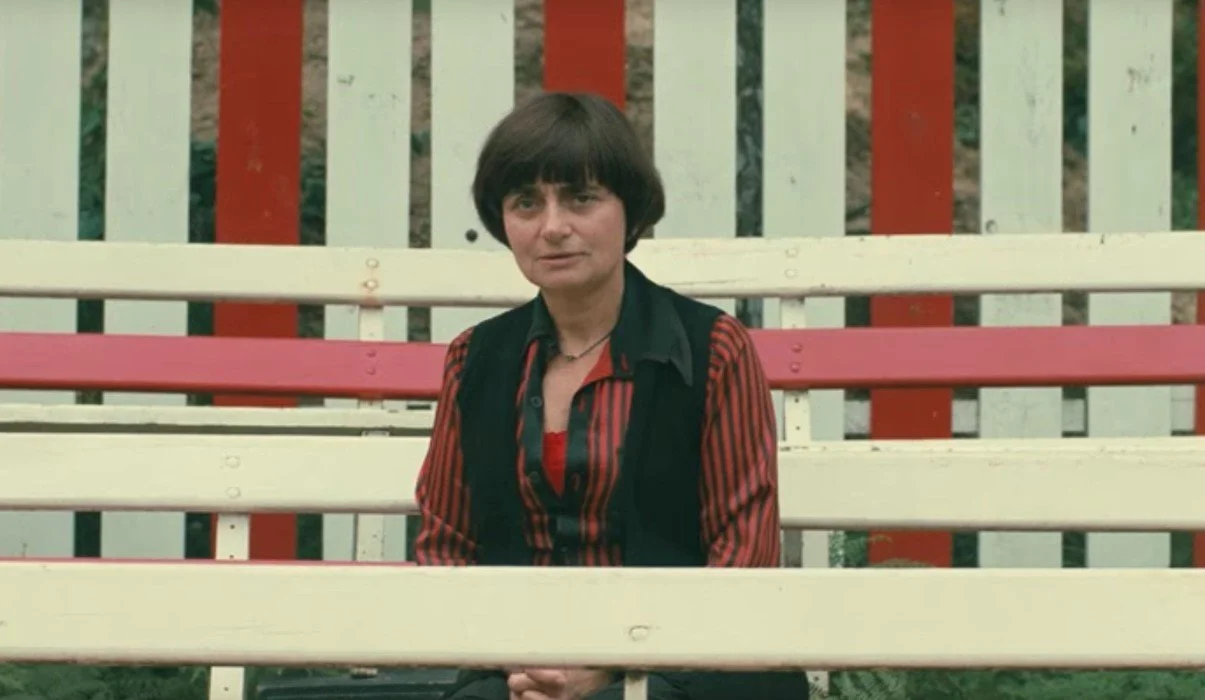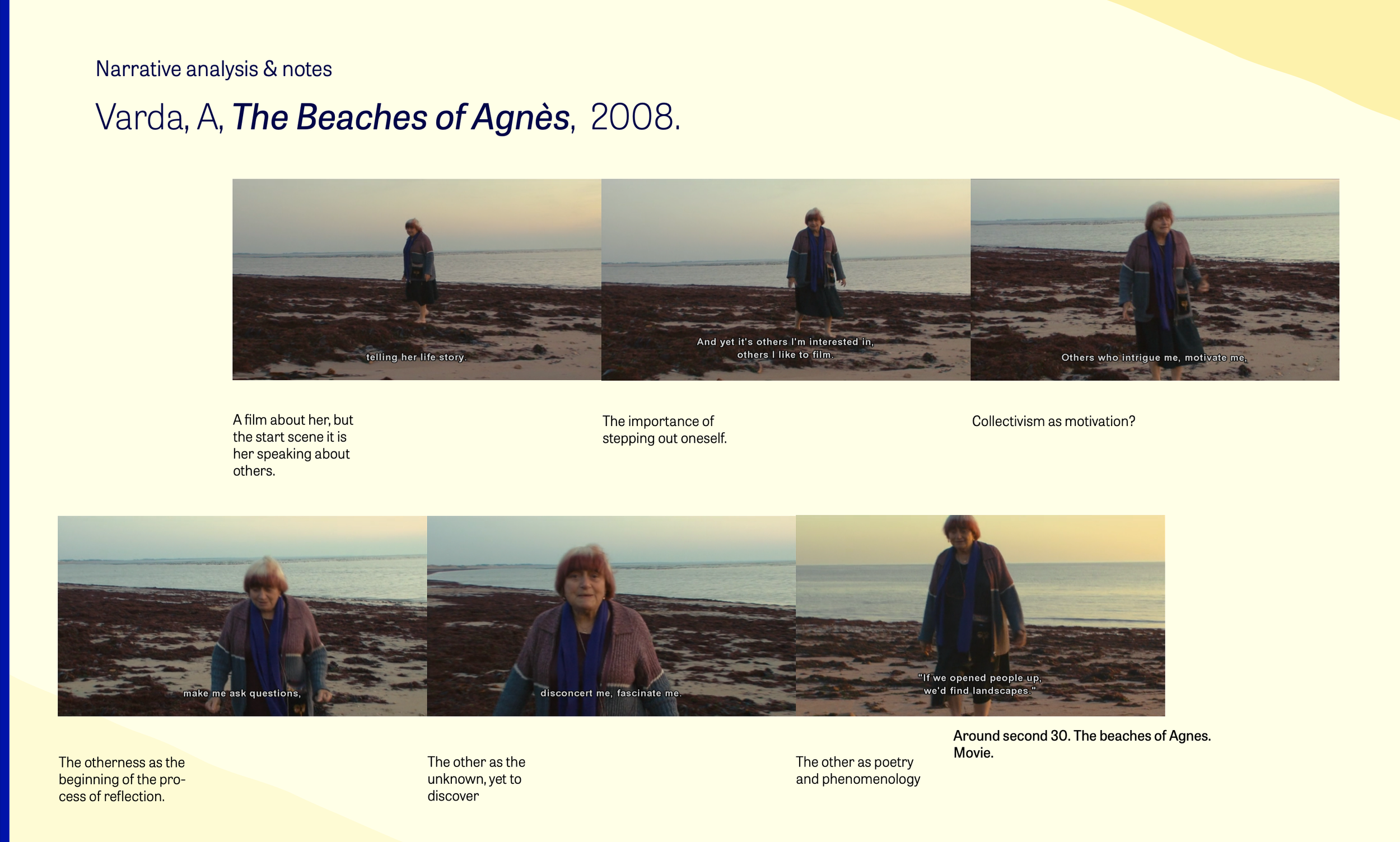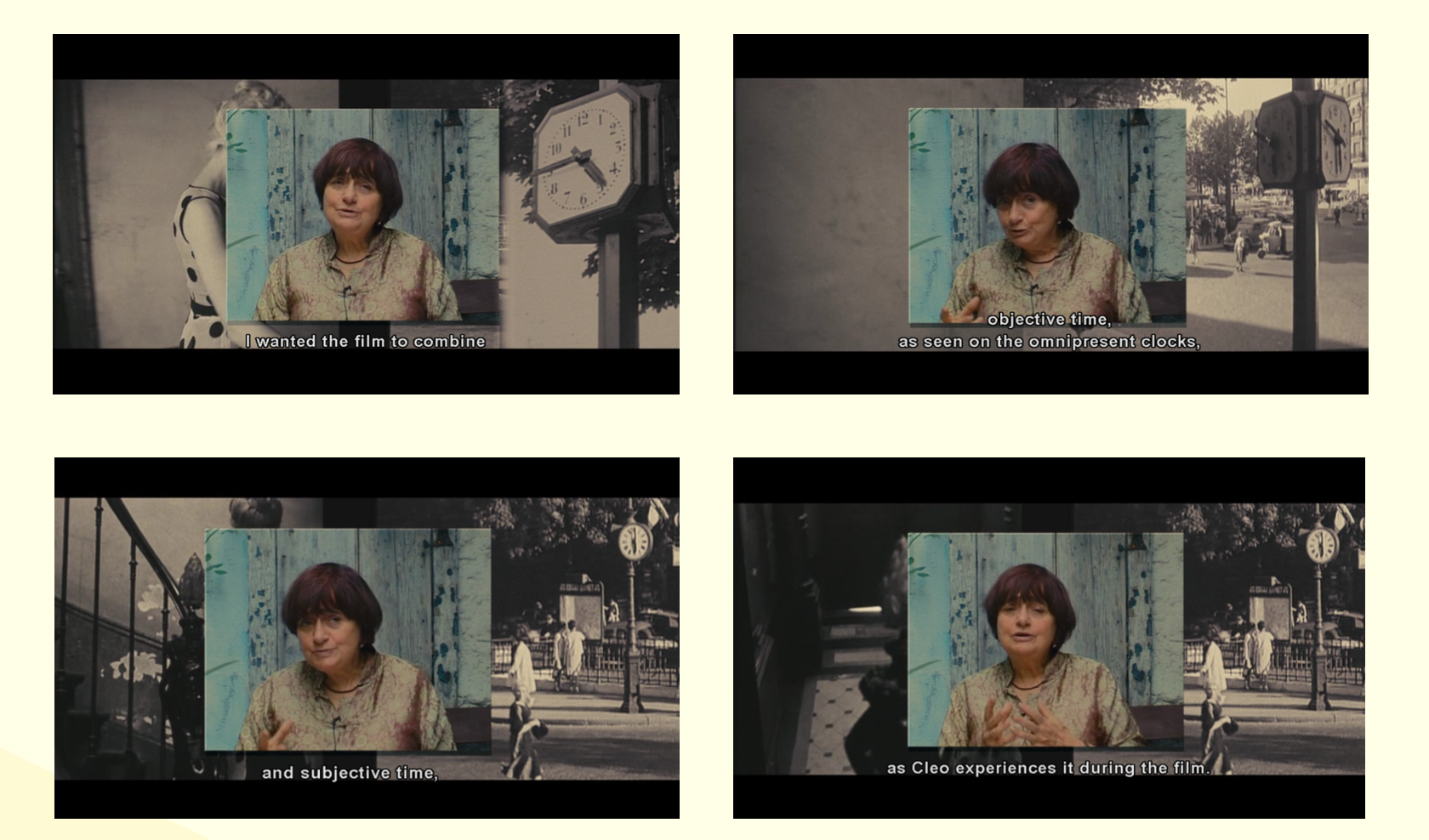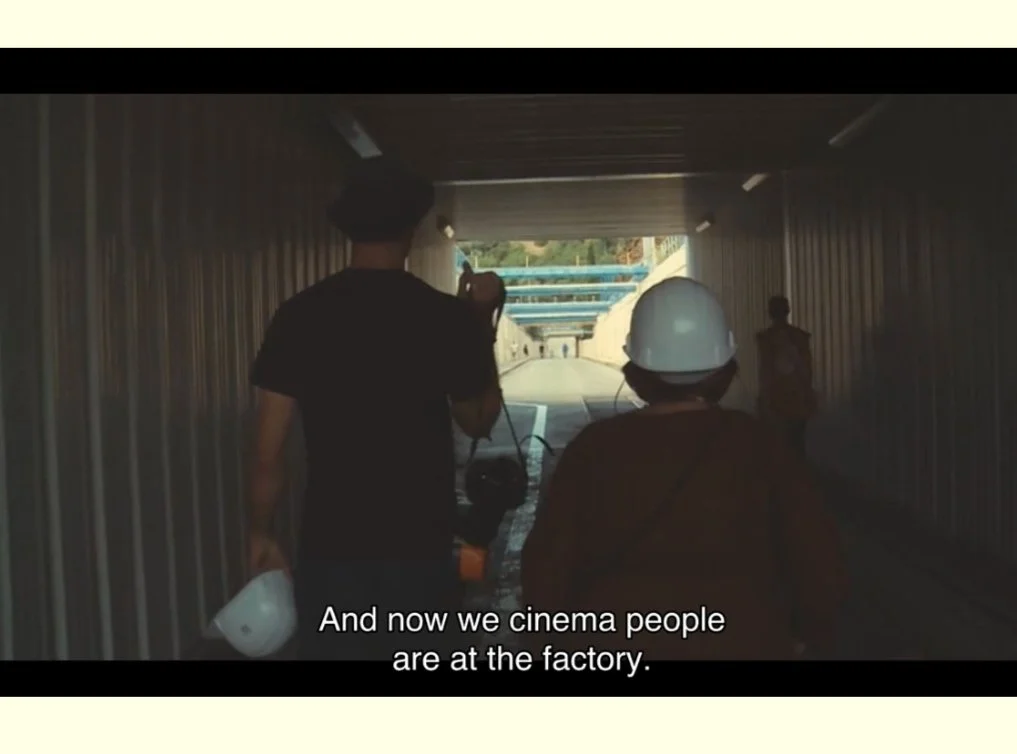Agnes Varda: Filmmaking through emotions.
Agnes Varda in Jane B. for Agnes V. (1988)
Agnes Varda was always bringing up political and feminist topics in her films. She was born in Belgium, Ixelles and moved to France to study art history and photography.
In Paris, she worked as a photographer at the theater National Populaire. Her filmography superates the amount of 35 films, a few of which were nominated and later winners at the Cannes Festival and the Oscars.
Unfortunately, at the age of 90, she died in 2019 in Paris. (Artnet, no date)
As mentioned by Travis, E (2019) for the Empire Film Magazine, Agnes Varda was considered the “mother” of the French New Wave scene. She used to direct her films and write, edit, and produce them.
The first film she made, La Pointe Courte, was a low-budget movie about a couple struggling with marriage problems in a fishing town in the south of France.
Her filmography includes The Gleaners and I, Cleo from 5 to 7 and her last docu- mentary, Faces Places or “Visage Village”, where she and the photographer JR fo- cused on linking the community with art and film. (Travis, E, 2019)
In this chapter named Agnes Varda: Filmmaking through emotions, a narrative analysis is shown through notes I have taken from particular scenes of the fol- lowing movies: The Beaches of Agnes and Faces Places.
The synopsis of the first mentioned movie, according to the platform Mubi (no date), is the following:
Returning to the beaches that have been part of her life, Agnes Varda invents a kind of self-portrait documentary. Agnes stages herself among excerpts of her films, images and reportages; weaving public and private struggles, loves and friendships, films and people, and the history of french cinema.
The referred movie, `The Beaches of Agnes’, a considered documentary and drama is considerably inspiring because of a wat of storytelling mixed with poetry transcending traditional documentary narrative with a metaphorical approach.
Narrative analysis & notes
The referred movie, `The Beaches of Agnes’, a considered documentary and drama is considerably inspiring because of a wat of storytelling mixed with poetry transcending traditional documentary narrative with a metaphorical approach.
Husserl (1916) established a phenomenological approach as an objective and exhaustive analysis of human subjectiveness. Agnes Varda, within her films, has made a phenomenological approach to her characters. She explicitly mentions time as the character’s experience; Husserl (1916) analyses concepts as lived experiences instead of reflecting on a meaning by it is only objective existence.
Husserl (1916) established a phenomenological approach as an objective and exhaustive analysis of human subjectiveness. Agnes Varda, within her films, has made a phenomenological approach to her characters.
In Cléo from 5 to 7 (1962), especially during this scene, Agnes Varda takes a phenomenological approach to time, not thinking about it as hours but as a subjective time that depends on the character.
She explicitly mentions time as the character’s experience; Husserl (1916) analyses concepts as lived experiences instead of reflecting on a meaning by it is only objective existence.
During their trip around France with the objective of connecting art with people, in the movie Faces Places (2017), Agnes and the photographer, JR, meet different workers.
In this shown scene, they meet the owner of a huge 500-hectare barn of Cherence. He also works by himself for other farms, and he cultivates around 2000 hectares. What is fascinated about this scene is the importance and positive impact it could have had on their work on this farm.
Even with his large amount of work, he would be alone the whole time and only communicate with other people to give them a quote about his work, which could make things complicated regarding be- ing recognised.
In the second scene, they are in a factory making hydrochloric acid. In this place, they engaged not only with the workers but also with their wives. Agnes was frustrated that the main topic was the workers, so she asked them to be introduced to their wives.
She engaged with them, asking about their occupation and perspectives on life, and then she and JR pasted their portraits in an im- mense number of containers, as can be seen in the picture. And asked them to, according to Agnes, “sit in their own hearts”.
Hegel (1977) established that recognition is only possible when oneself and others do it.
According to Hegel (1977), recognition is essential for self-esteem. Self-esteem is an important area that needs to be filled, according to Maslow (1943), and observational and participatory documentaries could be beneficial creative tools to contribute to peo- ple’s recognition.
According to Hegel (1977), recognition is vital for self-esteem. Self-esteem is an important area that needs to be filled, according to Maslow (1943), and an observational and participatory documentary like this one could be considered an important practice example of how to use documentary as a creative tool to contribute to people’s recognition.
Both mentioned examples show how they visualise different people through art. First, a farmer who was working on his own every day and later on, Morgan, Nathalie and Sophie, who had never been mentioned by the dockworkers when Agnes was interviewing them, so she gave them recognition by making them take part in the film and art they were making in the factory.
Bibliography
Hegel, G.W. F. (1977) Phenomenology of Spirit. Oxford, New York, Tornado & Melbourne: OXFORD UNIVERSITY PRESS. Available at: http://www.faculty.umb.edu/gary_zabel/Courses/Marx-ist_Philosophy/Hegel_and_Feuerbach_files/Hegel-Phenomenology-of-Spirit.pdf (Accessed: 31 Aug 2023).
Husserl, E. (1983) GENERAL INTRODUCTION TO A PURE PHENOMENOLOGY. Netherlands: Kluwer Academic Publishers Group. Available at: https://www.finophd.eu/wp-content/uploads/2018/01/Husserl-Ideas-First-Book.pdf(Accessed: 1 Dec 2023).
Karpat, K, C & Çiçekoglu, F. (2022) The Sustainable Legacy of Agnès Varda. Feminist Practice and Pedagogy. New York: Bloomsbury.
Maslow, A. H. (1943) A Theory of Human Motivation. Published in Psychological Review, 50, 370-396.
Ryan, M, & Lenos, M. (2020) An Introduction to Film Analysis: Technique and Meaning in Narrative Film. New York: Bloomsbury.






